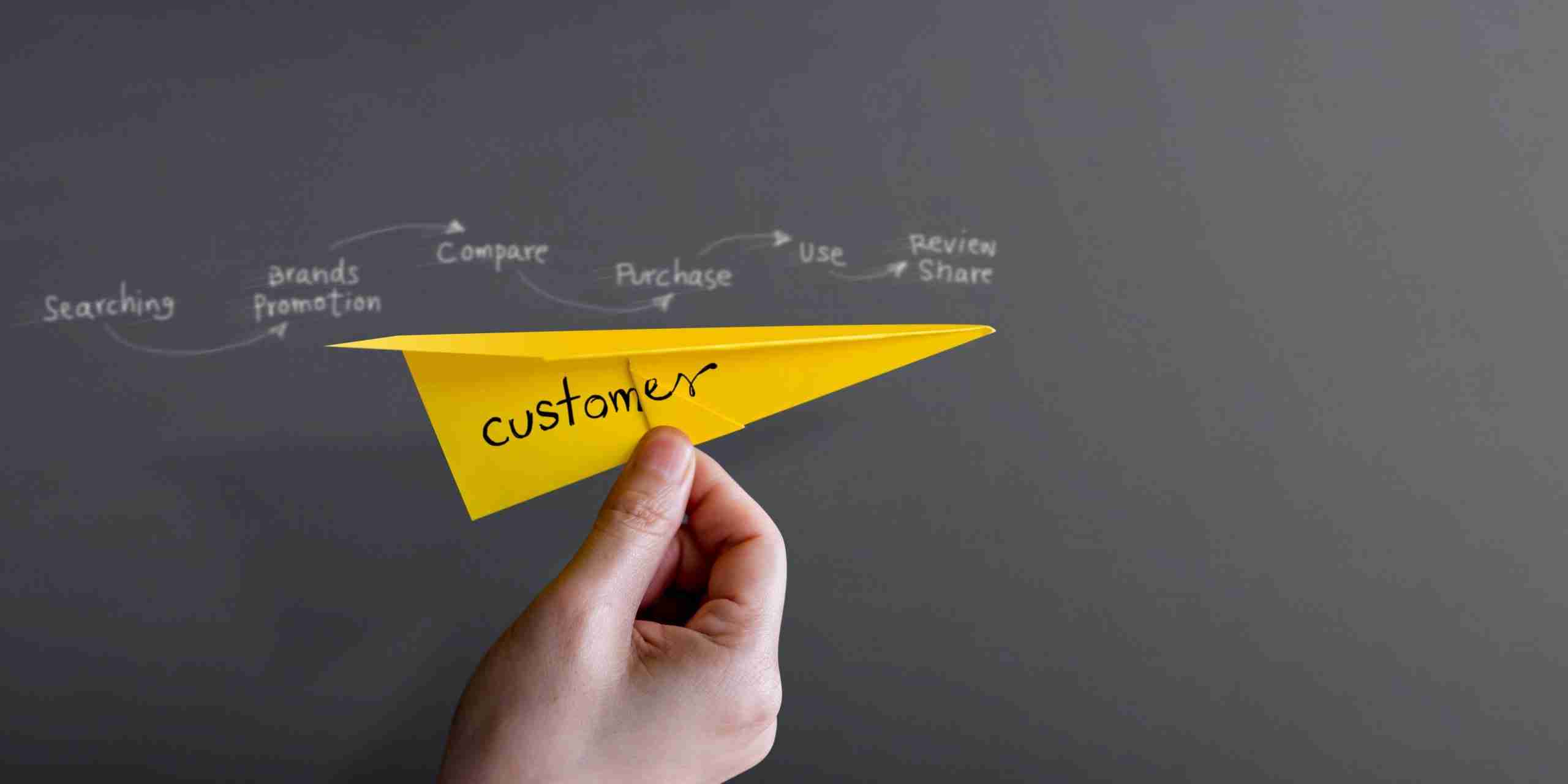
EMPLOYEE EXPERIENCE STRATEGY
Empathising with customers
at every opportunity

What is Employee Experience Strategy
Employee Experience Strategy is an organisation’s overarching plan to enhance the experience and abilities of their employees in an organisation’s cultural, physical and technological environments. Key elements of an Employee Experience Strategy include in-depth qualitative research with employees, employee journey maps, culture change and more.
Why you need an Employee Experience Strategy
In The Future of Work, Jacob Morgan describes Employee Experience as the combination of an organisation’s cultural, physical, and technological environments. Keeping these three key areas in mind, organisations can begin to shape a clear employee experience strategy that truly makes a difference for both their employees and their business outcomes.
Most organisations today invest in their customers’ experience. The organisations carry out journey mapping, from the start of the customer engagement to the end. Qualitative and quantitative research is undertaken, and measures such as CSAT and NPS are commonplace.
Far fewer apply the same rigour and discipline to their employee experience, hoping that somehow, despite being largely neglected and unresearched, the employee experience will be “good enough”. The challenge today is that, similarly to how customers are treated, good enough is no longer good enough. It is exceptionally easy for staff to find alternative employment, to deliver mediocre services, and to just coast, to the detriment of the organisation as well as the customers. And this is not “good enough”.

WHAT’S THE DIFFERENCE?
Why is improving Employee Experience important?
The way employees experience work has become more important than ever before. For too long employee experience was seen as a ‘nice to have’, in part down to a lack of clearly articulated key business outcomes that are dependent on having highly motivated and supported staff. These key business outcomes are not just in the HR domain e.g. reduce talent churn. Employee experience affects every business outcome to varying degrees. Take innovation for example; a team that trusts one another and doesn’t have an overwhelming fear of making mistakes is more likely to take risks that can lead to more innovative solutions.
Yet as critical as it is to an organisation’s ability to navigate disruption, transformation, and economic uncertainty, research from Deloitte shows that only 9% of business leaders believe they are very ready to address the issue of delivering a great employee experience.
How does this help you?
This shift is becoming so prevalent that we’re even seeing the emergence of entire roles and departments dedicated to employee experience. We believe the employee experience, and its relationship with engagement and performance, is critical to understand and prioritise – now more than ever. Because when organizations get employee experience right, they can achieve twice the customer satisfaction and innovation, and generate 25% higher profits, than those that don’t (Deloitte).
There is a need to create more agile ways of working, trusting, and empowering employees to manage their competing priorities wisely while ensuring they are delivering on their goals. A recent report on employee experience from Qualtrics found that companies which actively respond to staff feedback report an 80% engagement score – compared to just 40% in companies which ignore results.
You may have the best strategy and org chart in the world but without a positive employee experience, you will always be competing with one hand tied behind your back.
WHAT MAKES GREAT EXPERIENCES?
Why is employee experience so important during and post COVID-19?
Designing a powerful employee experience isn’t simply a box to check for the HR team – it can also have a significant impact on many aspects of an organization. Company leaders recognize this influence, which is why nearly 80 percent of executives rate employee experience as very important or important. It is much more important during and post COVID19 as most employees have had their traditional workplace turned on its head, with many bouncing between the office and working remotely. Traditional “water-cooler” chat has disappeared, many relationships have been lost, and much of the fun of a work environment has disappeared. So focussing on delivering an exceptional employee experience is now more crucial than ever.
Workplaces continue to have to adapt to the trend of hybrid work and make challenging decisions on how to balance the benefits of remote work against the advantages of in-office work. What needs to be recognised is that every business, and even each component of the business, is unique, and may require a different balance to create optimal performance. Decisions around hybrid work should be deliberate, well informed and communicated cleary. You can read more about Hybrid work and the workplace of the future here and here.
WHY YOU SHOULD CONSIDER AN EMPLOYEE VALUE PROPOSITION?
Employee Value Proposition: A Key Part of any EX Strategy
An Employee Value Proposition (EVP) is a statement of how an organisation creates, and will seek to create, value for its employees throughout the organisation. It can play a critical role in any employee experience strategy by establishing clear expectations on the part of employees of how the organisation will create a positive employee experience for them, and provides management with an effective and accountable action plan on how they will shape this positive employee experience.
Well designed EVP’s are able to drive growth by attracting and increasing retention of top talent and increasing the productivity and commitment of employees. This makes it an important and helpful addition to any Employee Experience Strategy. However, creating an EVP can be challenging, and requires clear foreplanning, in-depth research, and analysis and an EVP creation process that brings along and taps into the insights of all key stakeholders in an organisation.
You can read The Strategy Group’s deep dive into Employee Value Proposition here.
WHAT MAKES GREAT EXPERIENCES?
How to design an exceptional employee experience
So, how can employers harness this disruption and use it to improve authentic employee experiences? “With many workforces now working almost entirely remotely and offices closed, a great employee experience today looks very different to just a few months ago,” explained Paul Burrin, VP at Sage People. “How organisations adapt, respond, and support their employees through ongoing, accelerated change is now the driving force for employee experiences.”
Designing a great employee experience is just like designing a great customer experience. You have to start from the “outside-in” to really understand the employee’s experience with the organisation right from the time they think of joining, to when they are now entrenched in the organisation, through to the time they leave.
The Strategy Group has identified six stages required in order to deliver a great employee experience. These are as follows:

1. Understand What is Important to Your Employees
The view from the top more often than not looks very different to the view on the frontline as even the best laid plans and procedures may not stand up to the realities on the ground. Only by engaging with your employees through empathetic, qualitative and quantitative interviews can you get a true representation of how your employees feel about the organisation.
This exercise is usually best delivered by an external company. First, customers will be far less inhibited in opening up to an independent organisation. Second, there should be no bias when questioning, something that often creeps in if it is done by organisation itself.

2. Generate Insights From Interviews
Understanding what is working for your employees and what is not is essential for any organisation wishing to unlock value. Listening empowers you to learn from and talk to your employees to create an ever-improving workplace experience. After conducting interviews and quantitative research, it is critical that you step back and analyse the data you have collected for key themes, trends and other insights.

3. Generate A Journey Map
A journey map is a visual representation of the employee journey. It helps tell the story of your employees’ experiences across all touchpoints with the organisation. The trick here is to generate the journey map from the employees’ lens, not from the inside out. Take time out to create this map once an employee has settled in. The other important element in this process is to ensure the journey map includes the “emotional” journey i.e. how did the employee “feel” along the journey, where were they happy, where were they frustrated. Journey maps also gives managers an overview of the employee experience. They will see how employees move through the recruitment funnel. That will help them to identify opportunities to enhance the experience. The map will show how enhanced employee experience can differentiate the organisation.

4. Elevate the Highs and Mitigate the Lows
Use the journey map to identify the touchpoints your employees experience high or low emotions. Elevate the high-points in the journey and the experiences, and remedy the low points, creating a much more robust and meaningful journey.

5. Re-Imagine the Journey
Routine is the enemy of innovative thinking, but so is precedent. Sometimes, we struggle to shift away from the way we’ve always done things. Imagining a clean slate on what the employee experience could look like in an ideal world can help you change perspective and think outside the box, from the very first contact point with the team member to their exit interview.

6. Measure and Embed a Consistent Strategy into the Organisation
Given the complexity of transformation, it is easy for leaders to get distracted by changing priorities and short-term thinking. By tying success to key metrics (e.g. key business outcomes, behavioural diagnostic etc.), the organisation can realise the full business case benefits. Leading organisations must ensure they approach transformation as an ongoing process for continuous improvement – rather than a one-off, linear change. Make this change part of your organisation’s genetic code, not just an initiative or project to be put down at the earliest opportunity.
You can learn more here about where a great Employee Experience begins and how to implement it.

The Engaging First Day
The first day sets the stage. When welcoming new team members to your work environment and immersing them in your company culture, there are strategic ways to set them up for early and ongoing success.
Offer a welcome gift to show you’re happy they’ve joined the team.

Get Creative
Instead of the stale welcome balloon or coffee mug, get creative with first day gifts.
Is your new hire a wellness-enthusiast? Gift them with rooftop yoga lessons or stand-up paddle boarding. To make a first day gift truly special, make it a memorable, personal, shareable moment with experiential gifts for employees Plan a first day lunch. This will help new hires feel less like interviewees and more like team members.
Gather just 3-4 team members to be a new team member’s ‘first day lunch buddies.’ Too many people can detract from providing new hires with the introductions, information, and personal connection they need.
Ensure their desks are fully set up and ready to go, with a bit of customization.

Be Proactive About New Arrivals
Make new team members feel like their arrival is important and planned for by setting up their workstations before day one. Have their computer, login details, phone, and any other necessities ready to go from the moment they sit down.
In Ron Friedman’s The Best Place to Work, we learned that organizations that encourage employees to customize their workspaces tend to have happier teams. That’s not all. Researchers also measured a 32% increase in performance among employees who were allowed to customize their offices compared to those who were not. To add a touch of customization, consider reaching out during pre-boarding to ask their preferred computer configuration, type of desk chair, or favourite plant. This makes for a warm, personalized welcome.

The Engaging First Day
The first day sets the stage. When welcoming new team members to your work environment and immersing them in your company culture, there are strategic ways to set them up for early and ongoing success.
Offer a welcome gift to show you’re happy they’ve joined the team.

Get Creative
Instead of the stale welcome balloon or coffee mug, get creative with first day gifts.
Is your new hire a wellness-enthusiast? Gift them with rooftop yoga lessons or stand-up paddle boarding. To make a first day gift truly special, make it a memorable, personal, shareable moment with experiential gifts for employees Plan a first day lunch. This will help new hires feel less like interviewees and more like team members.
Gather just 3-4 team members to be a new team member’s ‘first day lunch buddies.’ Too many people can detract from providing new hires with the introductions, information, and personal connection they need.
Ensure their desks are fully set up and ready to go, with a bit of customization.

Be Proactive About New Arrivals
Make new team members feel like their arrival is important and planned for by setting up their workstations before day one. Have their computer, login details, phone, and any other necessities ready to go from the moment they sit down.
In Ron Friedman’s The Best Place to Work, we learned that organizations that encourage employees to customize their workspaces tend to have happier teams. That’s not all. Researchers also measured a 32% increase in performance among employees who were allowed to customize their offices compared to those who were not. To add a touch of customization, consider reaching out during pre-boarding to ask their preferred computer configuration, type of desk chair, or favourite plant. This makes for a warm, personalized welcome.
Why The Strategy Group should be your strategy partner
We will work with you to design and support implementation of a strategy for your business unit, for your entire organisation, or for any segment of your organisation where a fresh approach will add value.
We will use a combination of globally-recognised leading-edge processes, coupled with our proprietary validated toolbox to develop a bespoke, customised strategy, which we can assist you in implementing, that will deliver tangible impact and value to your organisation, employees and customers.
We have been designing and implementing strategy solutions since 2003 and we have the expertise and the experience not only to deliver, but to overdeliver.





